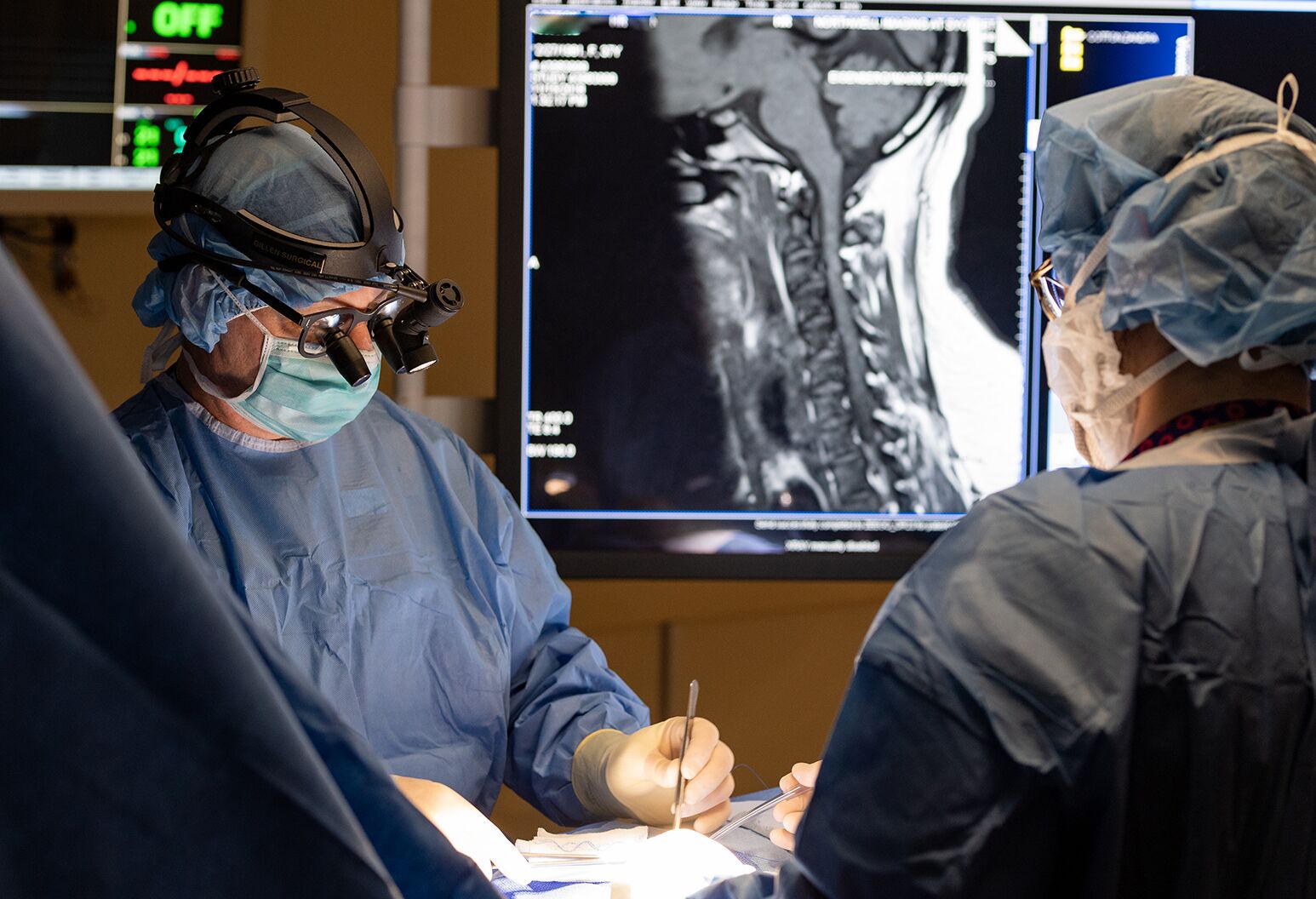Tips for Recovery After Surgery with the Best Spine Surgeons in St Louis MO
Tips for Recovery After Surgery with the Best Spine Surgeons in St Louis MO
Blog Article
An Overview of Back Conditions That Frequently Outcome in Surgical Treatments
Back conditions such as herniated discs, back constriction, and degenerative disc disease frequently demand medical interventions when conventional therapies stop working to relieve persistent signs. Understanding the subtleties of each problem and the equivalent medical alternatives, such as discectomy or back blend, is essential for efficient management.
Herniated Discs
Although several individuals with herniated discs may find alleviation through conservative therapies, surgical procedure comes to be a needed consideration when signs intensify or linger - best spine surgeons in st louis mo. A herniated disc occurs when the soft inner gel of a back disc protrudes with its outer layer, potentially leading and pressing nearby nerves to discomfort, pins and needles, or weakness in the extremities
Conventional administration typically includes physical treatment, pain medications, and corticosteroid injections, which aim to minimize swelling and improve feature. Nevertheless, in cases where these methods fail to minimize incapacitating signs and symptoms, surgical alternatives might be checked out.
One of the most common procedure for herniated discs is a discectomy, which includes the elimination of the herniated portion of the disc to alleviate stress on the impacted nerve origin. In a lot more extreme cases, spine combination might be essential to support the affected vertebrae.
Clients are recommended to review the possible threats and advantages of surgical procedure with their healthcare provider to make an educated choice. Inevitably, the objective of any type of surgical intervention is to restore feature, relieve pain, and boost overall top quality of life for individuals enduring from herniated discs.
Spinal Stenosis
Spine constriction happens when the spaces within the spine slim, resulting in boosted pressure on the spine cord and nerves. This problem can create in various areas of the back, consisting of the cervical and lumbar areas, usually due to age-related changes, such as degenerative disc condition, arthritis, or enlarging of ligaments.
Individuals with spinal stenosis may present with signs that include pain, tingling, prickling, or weakness, primarily in the arms or legs. These signs and symptoms can be intensified by activities that entail standing or strolling, frequently leading individuals to look for alleviation with traditional therapies like physical treatment, medications, or epidural steroid shots.
However, when these non-surgical interventions fall short to provide sufficient alleviation, surgical alternatives may be thought about. Usual medical treatments for spinal stenosis include laminectomy, which involves the elimination of component of the vertebra to ease stress, and spinal combination, which stabilizes the damaged location.
Spondylolisthesis
Spondylolisthesis occurs when one vertebra slips onward over one more, resulting in imbalance of the back. This problem can result from numerous variables, including congenital problems, injury, or degenerative changes in the spine. It is most frequently observed in the back area, particularly at the L4-L5 and L5-S1 levels.

Therapy choices vary based on the extent of the slippage and the signs and symptoms offered. Traditional procedures, including physical therapy, discomfort monitoring, and task adjustment, are typically the very first line of defense. However, when non-surgical methods fail to soothe signs and symptoms or when considerable nerve compression exists, surgical treatment may be required. Surgical alternatives can include back combination or decompression treatments, aimed at recovering alignment and reducing neurological signs and symptoms. Early medical diagnosis and proper administration are critical for ideal end results in individuals with spondylolisthesis.
Degenerative Disc Illness

The condition can be detected via a mix of scientific evaluation, imaging research studies, and client history. When these techniques fall short to give ample alleviation, surgical treatments might be considered.
Surgical alternatives for DDD may include spinal blend or synthetic disc substitute, focused on stabilizing the affected sector and minimizing pain (best spine surgeons in st louis mo). Inevitably, the choice of treatment is embellished, taking into account the severity of the condition, patient wellness, and way of life elements
Back Tumors

Spine growths can develop from different aspects, including genetic predisposition, environmental influences, and pre-existing clinical conditions. Clients may present with a range of symptoms, consisting of localized pain, neurological deficits, weak point, or adjustments in digestive tract and bladder feature, depending on the tumor's size and area.
Surgical treatment might be warranted to alleviate signs, obtain a biopsy, or get rid of Visit Your URL the tumor read this totally. The goal of surgical procedure is often to decompress neural aspects and maintain the spine. Early detection and treatment are important for maximizing results in patients with spinal lumps.
Final Thought
In summary, back problems such as herniated discs, spinal constriction, spondylolisthesis, degenerative disc disease, and spine growths regularly necessitate medical intervention because of their prospective to create significant pain and functional disability. While traditional therapies may provide short-lived alleviation, medical alternatives become crucial when symptoms intensify or persist. Prompt medical diagnosis and intervention play a crucial role in recovering feature and boosting the lifestyle for damaged individuals, underscoring the value of thorough back care.

Report this page